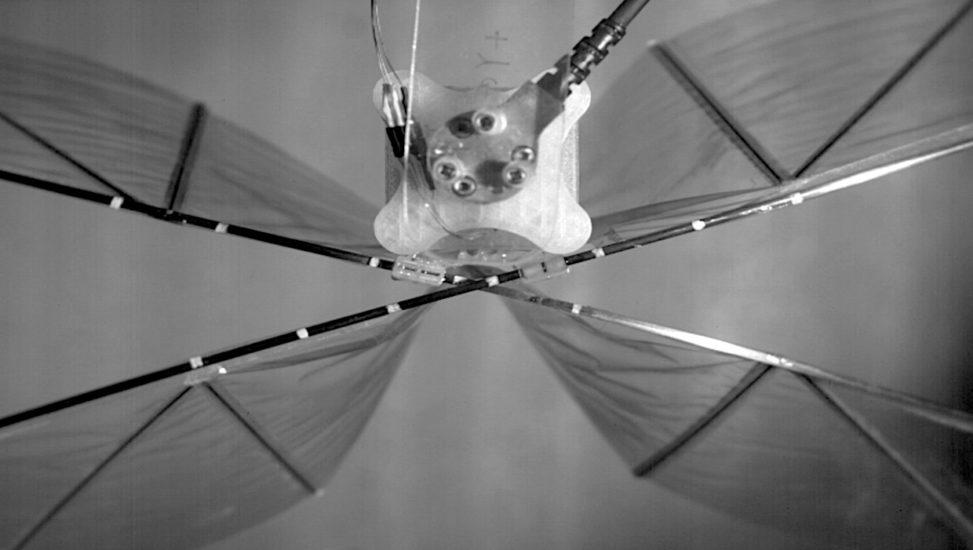Home » Technology »
Are Ornithopters a Birdbrained Idea or Smart UAM?
eVTOLs with Flapping Wings – Great, Big Wings (and Little Ones Too!)

When you think “Renaissance Man,” you will likely conjure Leonardo da Vinci. Sculptor-extraordinaire, painter of masterworks, and yes, even a designer for a flying machine centuries before the Wright Brothers cracked the code to modern aviation.
Leonardo imagined and sketched flying machines with the pilot prone, standing, and using his arm and leg strength to propel the aircraft airborne. As it turned out, our physiology doesn’t support flight the way birds’ bodies do. Electric motors, however, can.
That concept – for an ornithopter (an aircraft based on the principles of how birds flap their wings to fly) – is being reexamined today as part of the eVTOL/UAM revolution. The benefits of these aircraft are potentially enormous for micro aerial vehicle sorties. The ability to stop and turn quickly increases maneuverability in busy nonstructured airspace.
Ornithopter Global Research
An international team of researchers from Singapore, Australia, Taiwan, and China have been working on ornithopter technology for several years. They have developed a model – weighing 26-grams (about .91 ounces) with a 200-millimeter fuselage (just under 8 inches) and an X-wing design – capable of multimodal flight.
Yao-Wei Chin, Jia Ming Kok, Yong-Qiang Zhu, Woei-Leong Chan, Javaan S. Chahl, Boo Cheong Khoo, Gih-Keong Lau published the report on their work in Science Magazine in late July, 2020.
“Conventional hovering drones using multiple rotors have a range of disadvantages,” the University of South Australia’s Javaan Chahl, explained. “They can’t glide, and the speed of the blade tips is quite fast, leading to noise and hazard.”
By comparison, he notes, “Ornithopters have larger wings that flap comparatively slowly when hovering. These wings also act like the wings on a normal airplane, allowing much more efficient forward flight than a multirotor.”
Ornithopter In Action
The model ornithopter was piloted to hover, dart, turn, and dive with smooth transitions. The turn was completed within a 32-millimeter (about 1.25 inches) radius and a maximum deceleration of 31.4 meters (about 100 feet) per-second squared. Braking was facilitated by rapid body pitch and dynamic stall of wings at a comparatively high airspeed. Even after a 90-degree body flip, the ornithopter was able to recover and glide stably.
“The tail presented a strong stabilizing moment under high thrust,” Chahl added.
Reducing the reactive load and whirl, the indirect drive system consumed 40 percent less electrical power for the same thrust generation compared to the direct drive of a propeller.
Flapping wings – Mother Nature’s own solution to achieving flight – may prove to be the best in the end. Once upon a time, there was a saying, “You can fool some of the people some of the time, but you can’t fool Mom.” Agreed.
Want to continue to stay up-to-date about the latest developments in the eVTOL industry? Subscribe to AeroCar Journal now. It’s FREE (for a limited time)!
Join us on Twitter for the latest news, analysis, and insight in the eVTOL industry. AeroCarJ


